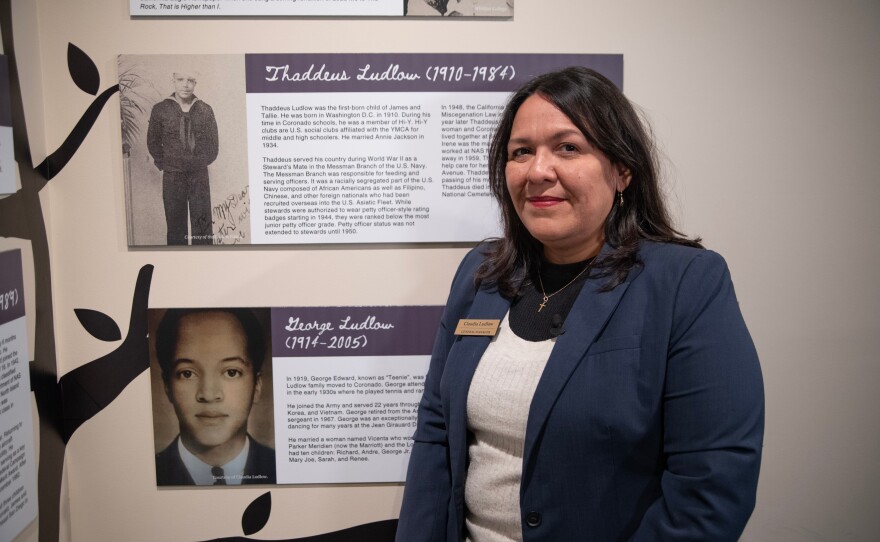The Coronado Historical Association cut the ribbon Friday on a new exhibit, “An Island Looks Back: Uncovering Coronado’s Hidden African American History.”
“Most people think Coronado has just been this pure white enclave that had no Black history,” exhibit curator Kevin Ashley said. “When they come and see this, they’re going to go: ‘Oh my God, there was actually a Black community here going back to the 1880s.”
Ashley said his curiosity began when he came across a photo of the 1956 Coronado High School basketball team, which had three African American players on it.
He said it prompted him to trace the history of the island’s African American community all the way back to 1885.
Back then, he said, Coronado was surprisingly integrated. African Americans ran businesses, owned homes and attended integrated schools.
In those early years, he said, Coronado’s proportion of African Americans was three times the state average.
The exhibit is a hyperlocal look at the racial history that unfolded across the country, told through individual residents, some of whose descendants remain on the island today.
Stories of the triumphs of Black people in Coronado — entrepreneurs, Buffalo Soldiers, Civil War veterans and Civil Rights leaders — are displayed next to documentation of the immense horrors those same families faced: redlining, minstrel shows and racially motivated murders.
“Some of the stories are inspiring, exciting, life-affirming. And some of them are as tragic as you could possibly imagine,” Ashley said. “By us understanding the whole fullness of that history, I think we become better people.”
Ashley said he hoped that the exhibit would enable visitors to absorb the U.S.’s painful racist history at a local level. Maybe it will help soften them to the larger story, he said.
At the ribbon-cutting, Claudia Ludlow stood in one corner looking up at photographs of her family. Copies of her eyes looked back at her over familiar noses. “Coronado pioneers,” the museum called them.
She said that the first night she saw the exhibit, she cried.

The exhibit revealed history about her family that she wasn’t even aware of — relatives were often secretive about their past, she said.
“Kevin was the one that opened that door,” she said.
She hopes that people — especially the younger generation — will walk away understanding the fight, “how hard our ancestors worked for us to be here. We can’t take it for granted anymore. We have to tell our stories.”
Museum staff hope to grow the exhibit, and welcome anyone with a story of the island’s African American community to reach out.










